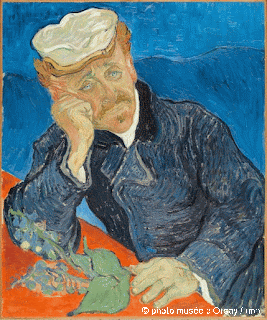Friday, December 23, 2016 -  antiquities,art theft,Becchina,Becchina archive,Carabinieri Tutela Patrimonio Culturale,Castellani,Julia Domna,Museum thefts,Ny Carlsberg Glyptotek,repatriation,stolen art,Uffizi Museum,Villa Torlonia
antiquities,art theft,Becchina,Becchina archive,Carabinieri Tutela Patrimonio Culturale,Castellani,Julia Domna,Museum thefts,Ny Carlsberg Glyptotek,repatriation,stolen art,Uffizi Museum,Villa Torlonia
 1 comment
1 comment
 antiquities,art theft,Becchina,Becchina archive,Carabinieri Tutela Patrimonio Culturale,Castellani,Julia Domna,Museum thefts,Ny Carlsberg Glyptotek,repatriation,stolen art,Uffizi Museum,Villa Torlonia
antiquities,art theft,Becchina,Becchina archive,Carabinieri Tutela Patrimonio Culturale,Castellani,Julia Domna,Museum thefts,Ny Carlsberg Glyptotek,repatriation,stolen art,Uffizi Museum,Villa Torlonia
 1 comment
1 comment
Visiting Florence and want to see an exhibition dedicated to art crime? The beauty of art and its appreciation can heal the wounds inflicted.
Then you should try and make time to see "La Tutela Tricolore," an exhibition dedicated to the “Custodians of Italy’s cultural identity” at the La Galleria degli Uffizi a Firenze.
The exhibition opened December 19, 2016, and is made up of eight themed sections, some of which are highlighted here. Focusing on art crimes in general and highlighting many of the exceptional recoveries that are a result of Italy's unique investment in cultural heritage protection through its unique-in-the-world Comando Tutela del Patrimonio Culturale dei Carabinieri, the exhibition demonstrates just how diverse "crimes against art" really are.
The event inaugurates the newly opened Aula Magliabechiana, part of a 18 million euro restoration project to overhaul two floors beneath the Biblioteca Magliabechiana. These renovations not only provide a connection with Vasari’s original building on Piazza Castellani, but create a permanent exhibition space on the ground floor which will be dedicated to temporary exhibits such as this one.
"La Tutela Tricolore's" first section highlights art crimes by terrorism and pays homage to the city of Florence and the Uffizi's recovery from the May 27, 1993 bombing on the museum and the Accademia dei Georgofili.
Long before there was an ISIS, domestic terrorists affiliated with the Italian organised crime group Cosa Nostra placed 280 kilograms of Pentrite and T4 explosives mixed with a small quantity of TNT in a Fiat and left it parked on Via dei Georgofili, just behind the historic Uffizi Gallery's main entrance. The resulting early morning explosion, caused when the car bomb detonated, created a ten foot wide and six foot deep crater that claimed the lives of five people, including one small, seven-week old, girl. Thirty-three people were treated in local hospitals for their injuries and the scar on the heart of the Renaissance city remains palpable in Florence's architecture and the city's collections.
Serving as a defiant symbol of "defeat through reconstruction," the opening of this Uffizi exhibition space commemorates this mournful occurrence and Florence's determination to overcome its devastating effects. It serves as a reminder that through solidarity and hope, the beauty of art, and its appreciation and preservation, has the ability to heal wounds, even those inflicted long ago.
Section two of the exhibition highlights Florentine works of art stolen during World War II. Some of the highlights on display include Labors of Hercules by Antonio Pollaiolo, the Madonna and Child (also called the Tickling Madonna or the Madonna Casini) by Masaccio, and Galatea by Bronzino.
Another section highlights works of art repatriated to Italy from other countries.
Some of the more recent repatriations on display are:
 |
| Photo Credit: Manhattan U.S. Attorney Preet Bharara |
An ornate parade wagon dating back to the early seventh century B.C.E., looted from the tomb of a Sabine prince laid to rest within the Colle del Forno necropolis. This wagon and other funerary objects were repatriated July 2016 following extremely difficult and protracted multi-year negotiations with the Ny Carlsberg Glyptotek, an art museum in Denmark's capital of Copenhagen.
A second century CE marble head, belonging to a statue of Julia Domna, the wife of Emperor Septimius Severus, the founder of the Severan dynasty. This bust was stolen from the Museo del Canopo at Hadrian's Villa in Tivoli in 2012 and was also returned to Italy earlier this month.
This 510 B.C. E Etruscan black-figure kalpis, attributed to the Micali painter or his workshop, was looted by Tombaroli passed through the now well known trafficking network of Gianfranco Becchina before being sold to the Toledo Museum of Art with only a photocopy of two paragraphs typed in German on hotel stationery by the Swiss hotel's owner, stating he had owned it since 1935 as provenance. As the result of an incriminating polaroid and a Federal Verified Complaint in Forfeiture, the museum was eventually encouraged to return the antiquity to Italy in 2012.
The sixth section highlights the globalization of criminal networks with pieces recovered from the Castellani Goldsmith collection, stolen during a dramatic 2013 Easter weekend jewelry heist the Museo Nazionale di Villa Giulia in Rome. As reported on earlier, this museum theft turned out to be a theft-to-order, involving a shady antiquarian, a drug dealer and a Russian with a penchant for gold.
Some of the last objects in the exhibit are the most poignant, and highlight art crimes in war, and the risk to the countries irreplaceable works of art which have been subject to natural disasters like Italy's recent earthquakes that continuously endanger its historic buildings and collections. These objects remind us that fighting to protect art, against the elements and against the theft and exportation of works of art is a matter of civilisation and is a battle which warrants our full investment and engagement.
This exhibition is free of charge and runs through 14 February 2017 in Florence at:
La Galleria degli Uffizi a Firenze
Address: Piazzale degli Uffizi, 6, 50122 Firenze, Italy
Phone:+39 055 23885
Phone:+39 055 23885
Tues. – Sun. 10 am to 7 pm
(Closed on Mondays)
Entrance from door 2,
guided visits can be requested at: firenzemusei@operalaboratori.com.
Entrance from door 2,
guided visits can be requested at: firenzemusei@operalaboratori.com.


























